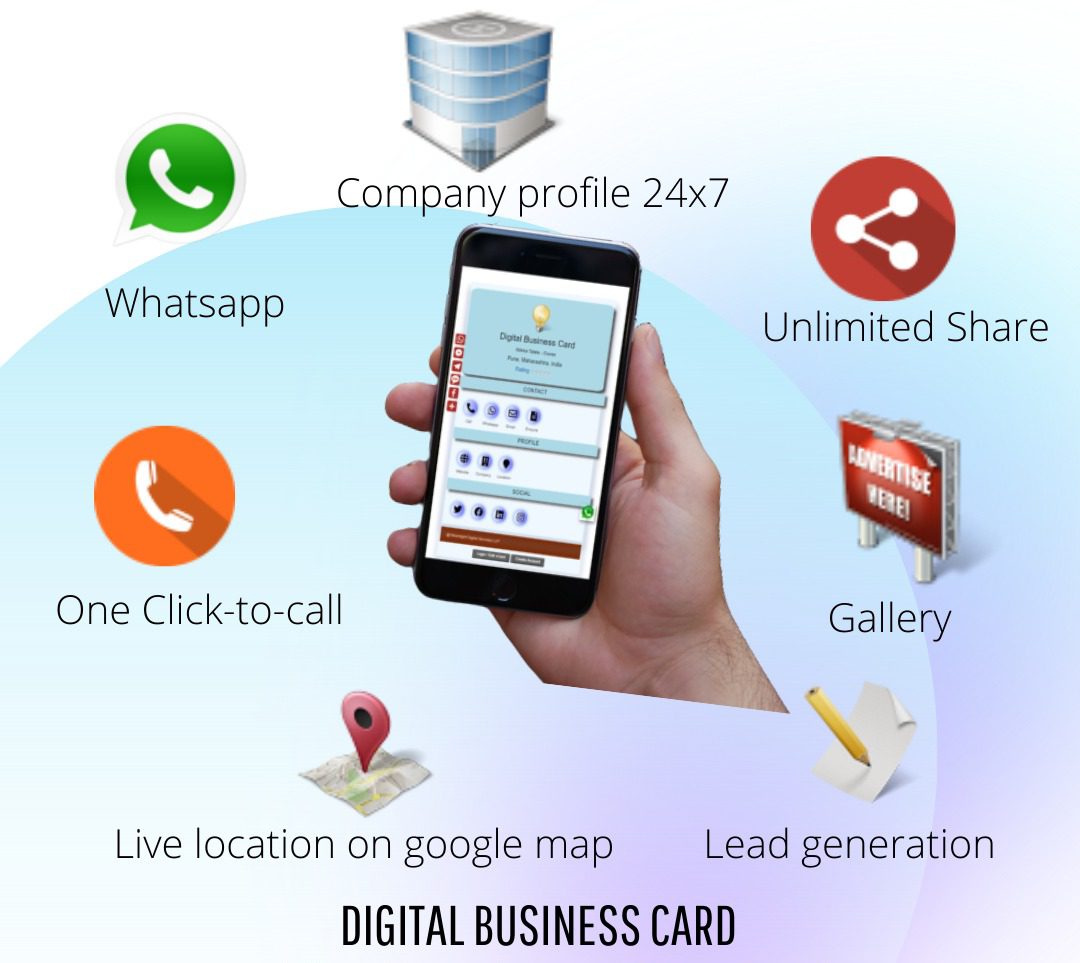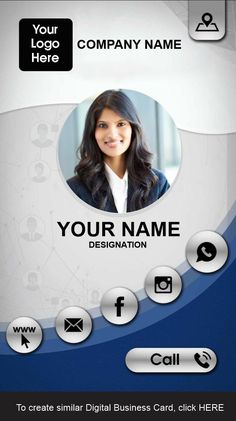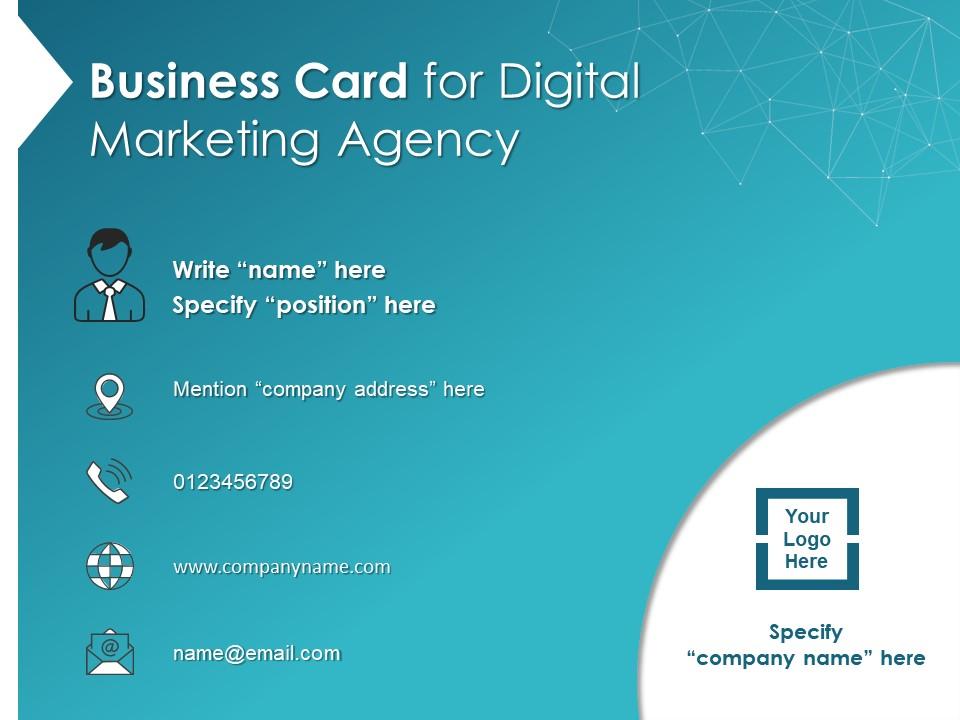Elevate Your Presence with a Digital Visiting Card Agency

In today's fast-paced digital world, making a lasting impression is more crucial than ever. Introducing the Digital Visiting Card Agency, your one-stop solution to revolutionize the way you connect and present yourself in the professional realm. Say goodbye to traditional paper business cards and embrace the power of a dynamic, engaging, and eco-friendly digital visiting card that sets you apart from the crowd.
Why Choose a Digital Visiting Card?
1. Go Green, Go Digital: Reduce your environmental footprint by eliminating the need for paper cards. Our digital visiting cards are eco-friendly, sustainable, and effortlessly accessible on smartphones, making them both stylish and responsible.
2. Dynamic and Engaging: Unlike static paper cards, digital visiting cards come to life with interactive elements. Incorporate videos, images, social media links, and more to showcase your skills and personality in a captivating way.
3. Instant Sharing: With a simple tap, instantly share your digital visiting card through email, messaging apps, QR codes, or even through Near Field Communication (NFC) technology. No more fumbling through your wallet for a paper card.
4. Real-Time Updates: Keep your contacts up-to-date effortlessly. Update your information, services, or portfolio, and all recipients will have access to your latest details with a single click.
5. Analytics and Insights: Gain valuable insights into how your digital card is being received. Track views, clicks, and interactions to refine your networking strategy.

How Digital Business Cards Are Created
The traditional file type used for storing contact information is called vCard (Virtual Card) or VCF (Virtual Contact File)—these are the same thing. Macs and PCs come with built-in capabilities of creating and reading vCard files through built-in contact apps. Third-party apps like Gmail, Outlook and CRM (customer relationship management) services like Hubspot and Salesforce also read and store vCard information into contact lists. Often, whenever you create a new contact in some form of messaging app, you are actually creating a new vCard file.
The vCard file format is capable of storing text and an image like a profile picture. How all of that information is displayed is dependent on the app that is reading it, which is to say that the UI designers have already created rules for how incoming data will conform to the app’s branding. All in all, vCards are a relatively old file format and somewhat limited in what they can accomplish—they largely consist of text input fields.
There are also digital business card maker apps that create their own proprietary file format, using cloud storage for your data and contact list. These are typically based around customizable design templates. If you want to get more creative than this, you would essentially need to work with a designer and a developer. We’ll have more on these processes later on.

How Digital Business Cards Are Shared
Creating a digital business card is one thing, but how are you supposed to hand over something you can’t touch? The most common methods involve a URL, an email signature attachment, and/or a QR code the potential client can scan directly from your phone or a printed source. If you’ve created your card through a digital business card maker service or a contact app like Gmail, that program will have its own specific instructions for sharing it.
NFC, or near field communication, is another option. This technology wirelessly transmits data, most commonly used by payment services like Apple Pay. In that context, the purchaser taps their phone to a device that automatically captures their credit card information. This approach, however, is not the most practical option for sharing business cards since you need a separate, NFC-specific device to read the data being transmitted.

The Benefits Of Digital Business Cards
The advantages that virtual business cards have over print are so overwhelming in number that it would make more sense to ask why print business cards are even still a thing. Let’s go over some of the more obvious benefits of a digital business card:
Immediate integration with contact lists. This is a major benefit: instead of hoping the receiver of your business card won’t immediately throw it away and will eventually make the choice to add you to their contacts, digital business cards integrate with contact lists automatically.
Clickable links. All the receiver has to do is tap your phone number or social media icon to contact you.
No germs. In the wake of a global pandemic, the sanitary option is always the correct option.
No printing costs. Although some digital business card makers charge a subscription fee for storing your data, this is much cheaper than the cost of bulk cardstock printing.
Adaptable. If you made a mistake on your first pass, your details change, or you just get bored of the design, you can easily change it. With print cards, changing information is an expensive and wasteful process, forcing you to reprint a new batch.
Infinite supply. You’ll never run out of cards and have to shell out for the printers again.
More creative freedom. Unlike print design, colors and size are not limited (though it is recommended you aim for mobile phone dimensions).
Multimedia capabilities. Videos and animations are possible with digital files.
More opportunities to share. Print cards require an in-person interaction. A digital business card can often be attached casually to an email signature. Some virtual card builders can even integrate with other third-party digital apps like Zoom, allowing you to place your personal details and QR code within a virtual background.
So what about the advantages that print business cards have over digital? As you can imagine, there aren’t many. But worth mentioning is the fact that tactile effects like textures or embossing are only possible through print. Touch is a primary sense tied to memory, so you shouldn’t count this out. And as always, there is something to be said about the physical presence of a print card—it takes up space and has weight—whereas digital products that exist only in the virtual world are arguably more easily forgotten.
At the end of the day, you don’t actually have to choose one over the other. You can design a digital business card quickly and cheaply while keeping a stack of printed cards for special situations. You can also include a QR code on print cards so that your VCF file easily integrates with the client’s phone contacts. With all that said, we are quickly approaching the point where not having a digital business card at all will put you at a disadvantage, and the same won’t always be true of print.

Join the Digital Evolution
Make a statement, embrace sustainability, and amplify your professional image with a digital visiting card. Elevate your networking game, leave a lasting impression, and stay connected with ease. Experience the future of networking today!
Don't miss out on this opportunity to stand out in the digital age. Your success starts with a simple tap. Embrace the digital revolution with the Digital Visiting Card Agency.
Ready to Get Started?
Download Your Own Digital Visiting Card Agency now With A One-Time Payment Of 4,000 Naira
Click the link below to order now and download it instantly 👇👇👇





